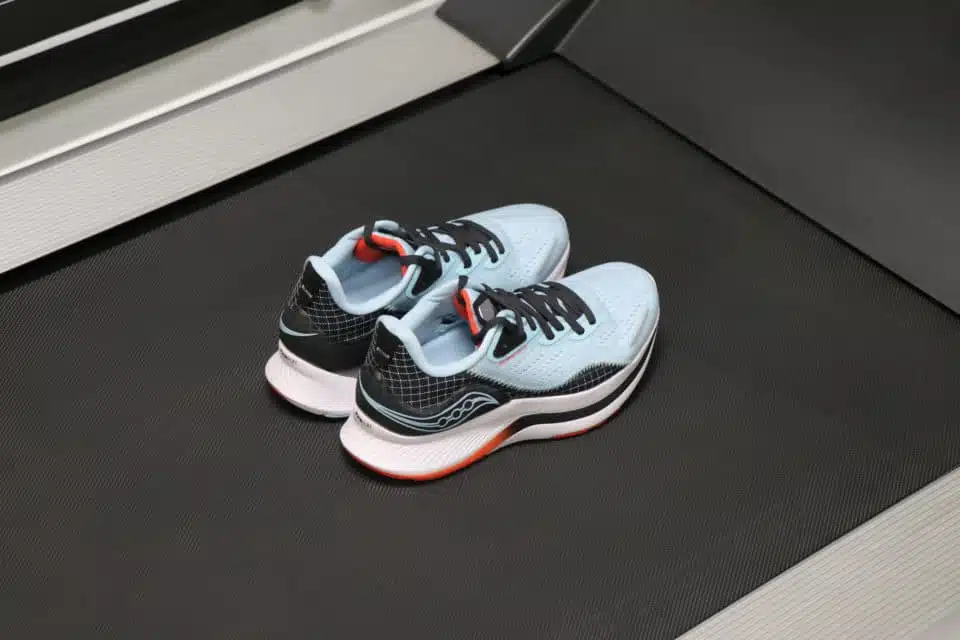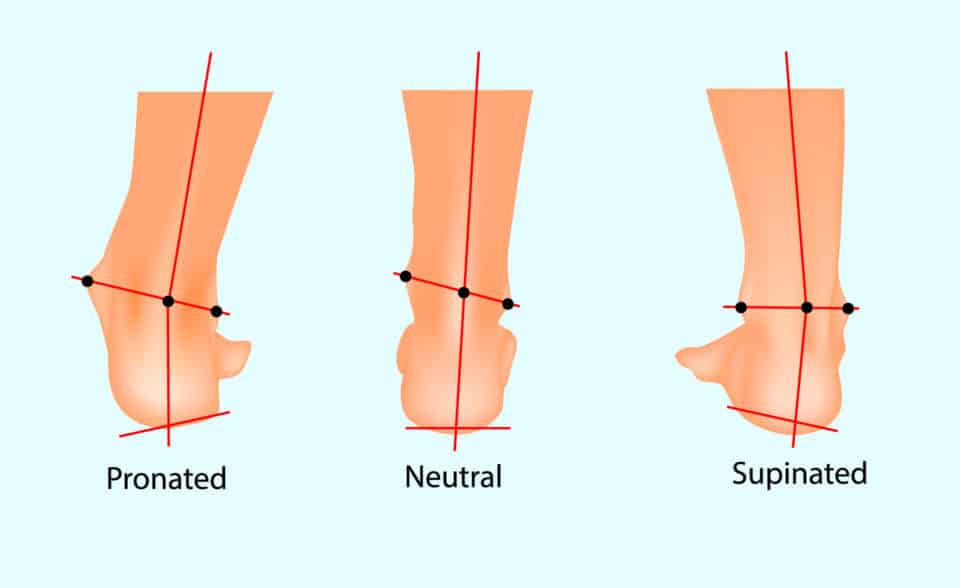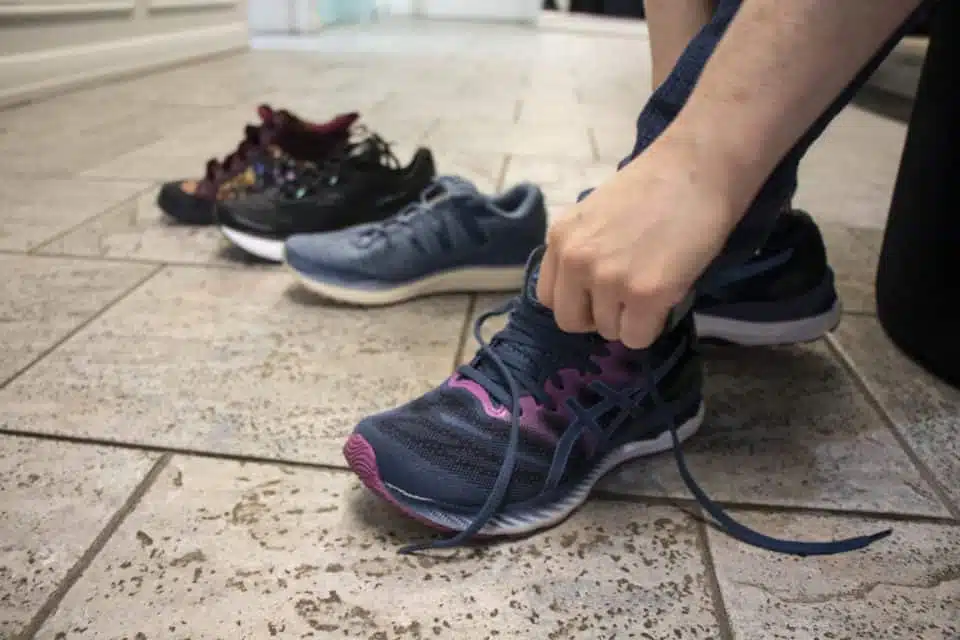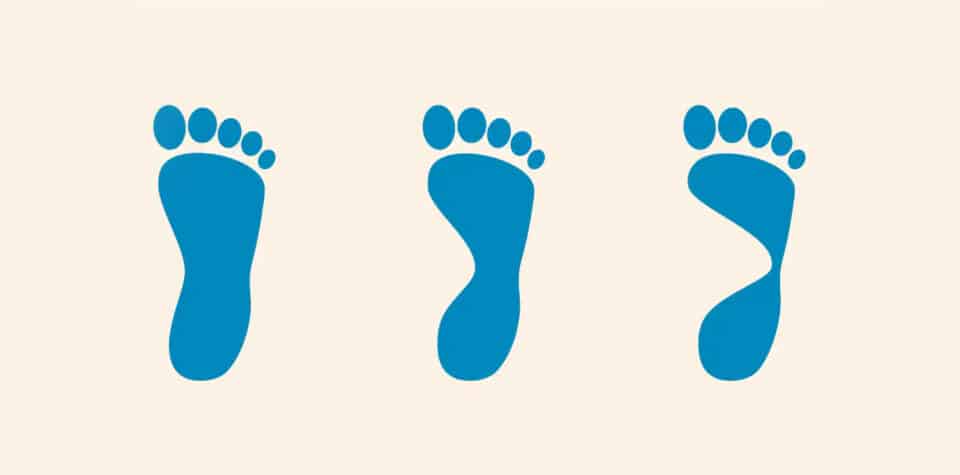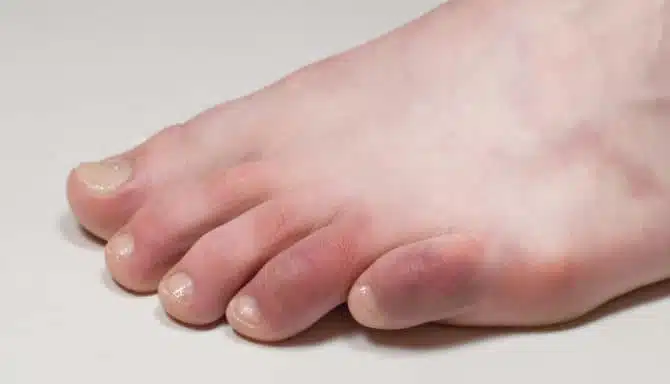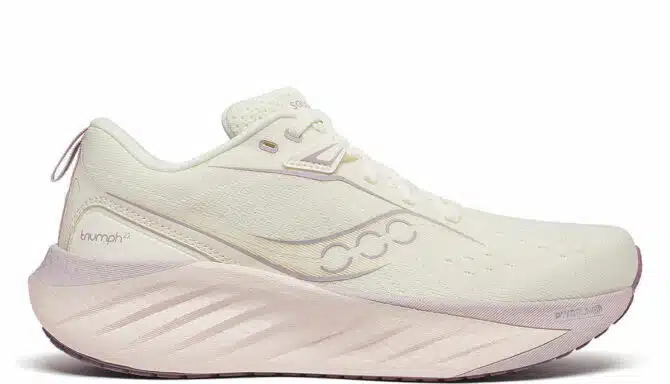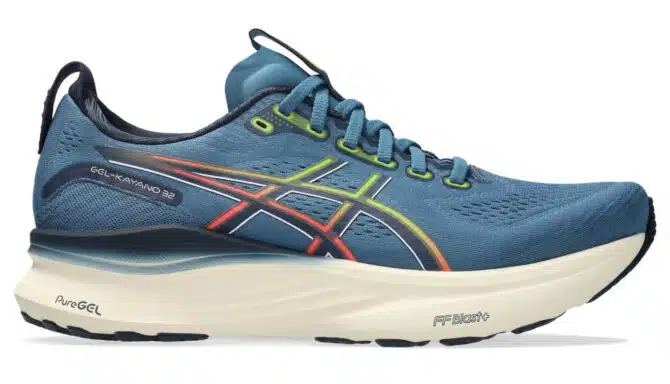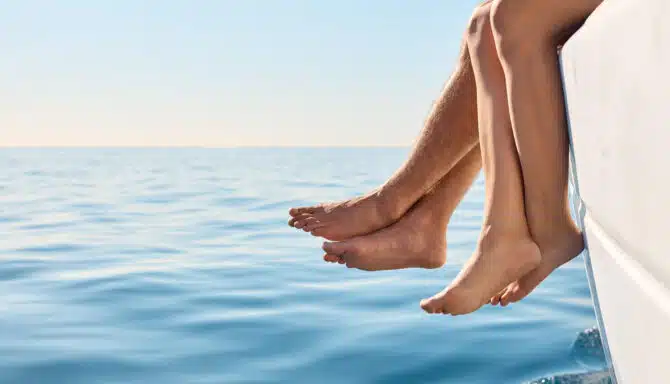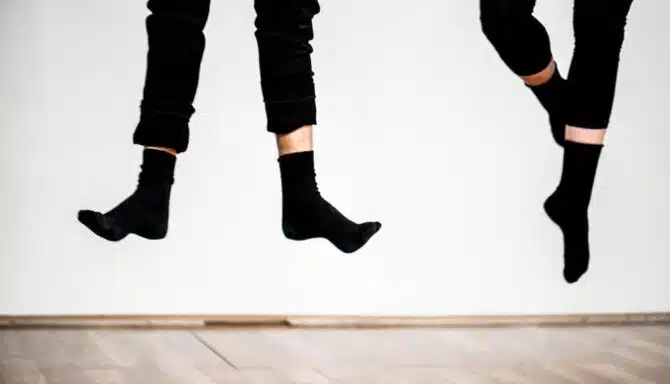Running is one of the most natural movements for humans. The foundation of all movement lies in our feet. And all it really requires is a pair of running shoes, a type of sports footwear specifically designed for running.
Because running is a high-impact activity, footwear is critical. For context, when running, the increased load (i.e.: weight or load) to your quads is estimated to be 4.7-6.9 times your body weight whereas the impact to your knee can be 7-11.1 times. That’s some seriously impressive impact your legs and feet can withstand! Now multiply that by the number of steps you take on a run – this is reason number one why footwear is so important.
Footwear is also very personal. There are many different brands to choose from, and various types of running shoes. With that in mind, there’s no one perfect shoe for everyone. Foot types vary, and preferences differ.
With so many different shoe models, how can one choose? In this article, you’ll learn about the different types of running shoes, as well as how to narrow down your choices.
Understanding your arch type
To understand why various shoes are built differently from one another, we need to first understand your foot’s arch.
Your arch is the part of your foot located between your heel and toes. The arch bears the weight of our body and allows us to move the way we do. The arch itself is the medical term for a variety of underlying tendons and bones including the tarsal and metatarsal bones. Because of its weight-bearing ability, it’s no surprise that human architecture also borrows arch-shaped structures (for example, bridges and aqueducts).
The height of your arch (the distance between the ground and the apex of your arch) determines your foot type and influences the extent of your foot and ankle to roll inwards or outwards. Naturally, your foot and ankle should roll slightly inwards in what is known as pronation. The three types of arches are:
- Normal: Your arch height is generally symmetrical in the sense that half of your medial foot touches the ground when standing. In this case, the foot and ankle generally roll slightly inward when walking or running.
- Low: A low arch is synonymous with flat feet where most of your outer medial foot touches the ground when standing. The foot and ankle generally roll too far inward when walking or running. This is referred to as overpronation.
- High: A high arch is characterized by a small portion of your outer medial foot touching the ground when standing. In this case, the foot and ankle roll outwards when you walk or run. This movement is called supination.
With this in mind, we can get into the finer details of running shoes.
Main types of footwear
Running shoes are categorized by structure. Specifically, the midsole construction, type of cushioning, stiffness of cushioning, distribution of cushioning, and weight of the shoe can all differ. The two primary types of running shoes are:
- Neutral
- Stability
You may hear other descriptors for running shoes like lightweight, training, racing, trail, minimalist, or maximalist. However, these fall under either a stability shoe or a neutral shoe. They’re just additional ways to describe the weight, purpose, and style of a shoe.
1. Neutral running shoes
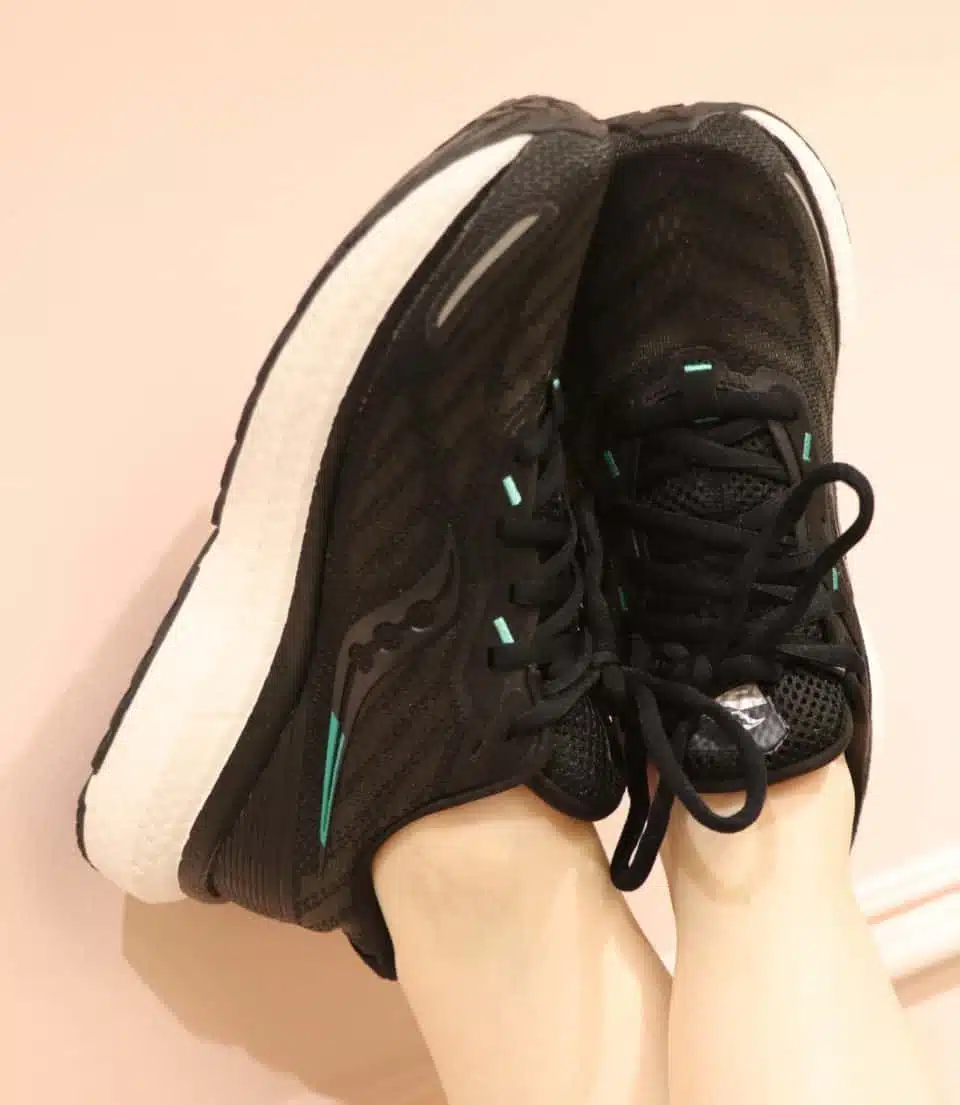
First, we have neutral-cushioned shoes. This is the most popular and widely-used running shoe and its cushioning and structure are relatively symmetrical — this means the inner and outer parts of the shoe are similar in features. That’s another way of saying that this type of running shoe does not have medial support or features within the midsole, no wedges or stiff plastic support along the arch, and its cushioning is uniform from the heel to toe. This does not mean neutral running shoes have no support: a well-made neutral running shoe, like the Saucony Triumph or ASICS Gel-Nimbus, offers excellent support throughout the foot – it’s just differently structured than a stability shoe.
Neutral shoes have few to zero correcting features — which means that any abnormalities in your stride or gait will not be corrected in a neutral shoe. This can be a good thing if you have a regular running stride. However, if you have abnormalities in your stride, these will be amplified over time as you would be wearing an inappropriate shoe.
Those with medium to high arches are good candidates for neutral running shoes. This is because these types of feet don’t need additional inner foot support along the inner edge of the shoe as there is no overly inwards rolling of their foot and ankle.
2. Stability running shoes

Stability shoes, as their name suggests, provide more than just cushioning to your stride. It provides structure and stability. Stability footwear often features extra support (called a medial post) on the inner side of the shoe side to prevent arch collapse and overpronation.
Mild pronators, or heavier-set runners, should consider stability footwear. This is because stability shoes prevent excessive lateral movement for your foot. The shoe’s features stop your foot from rolling too far inwards and help prevent certain injuries caused by this tendency.
Those with low arches or flat feet are good candidates for stability shoes as you want additional support along the inner edge of your feet. (Remember, those with flat feet pronate too far inwards.)
How do I know which running shoes to buy?
Now that you know of neutral and stability running shoes, what comes next? Choosing a pair. Here’s how you can narrow down your options.
Footwear Assessment with Biomechanical Analysis
At Feet First Clinic, our chiropodists can match the best shoe to suit your foot type and gait during a footwear assessment, during which they’ll conduct a full biomechanical analysis. This provides insight into any irregularities in how you distribute your weight and the movement of your joints and muscles when you walk. The chiropodist can then use this information to determine what could be causing or contributing to your foot pain, and how to effectively treat it. The chiropodist may also assess your gait with our state-of-the-art video gait analysis equipment, during which they’ll analyze your running or walking style while on a treadmill.
Depending on your foot type and gait revealed through a video gait analysis, your chiropodist will recommend either a neutral shoe or a stability shoe. A well-matched running shoe should in part correct biomechanical irregularities to ensure each muscle group works in its intended way. Doing so can help prevent several related foot conditions down the line, such as flat feet, high arches, plantar fasciitis, metatarsalgia, gout, bunions, hammertoe, blisters, calluses, and Morton’s neuroma.
To book an appointment, use our online booking form or contact us at 416-769-3338.
Shoe fitting
Our clinic also provides free shoe-fittings to help you select your preferred footwear. You can get shoe fitting by dropping into the clinic. Our staff can help select and fit you for shoes in our shop, where we carry a specially curated selection of orthopedic footwear and pre-fabricated footwear from running industry-leading brands like Asics and Saucony. Note: Shoe fittings do not include gait analysis – for that you would need to book an appointment with a chiropodist.
At-home: the wet test process
An at-home test, called the wet test, can also help you determine your arch type. This will help narrow your choices for the type of running shoe to look for.
- Dip the soles of your feet into a shallow tray of water.
- With wet feet, stand on a piece of paper.
- Take a full step off the paper.
- Review the imprint left from your foot on the paper, and match its shape with a guide for arch types.
Half of your arch (the middle portion of your foot) imprinted on the paper indicates a normal arch; seeing the majority of your arch on the paper indicates flat feet (or a low arch); little to a sliver of your foot indicates a high arch.
